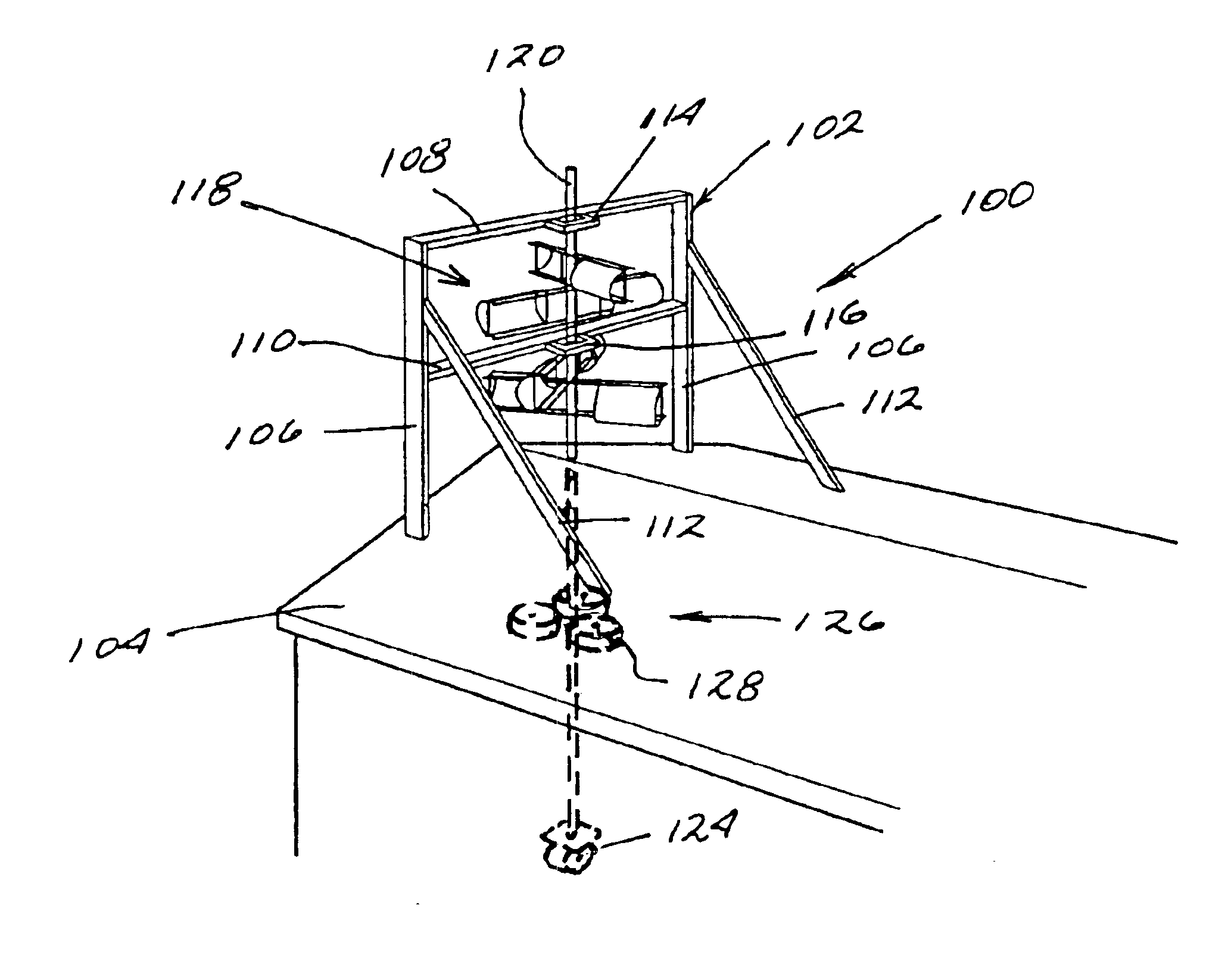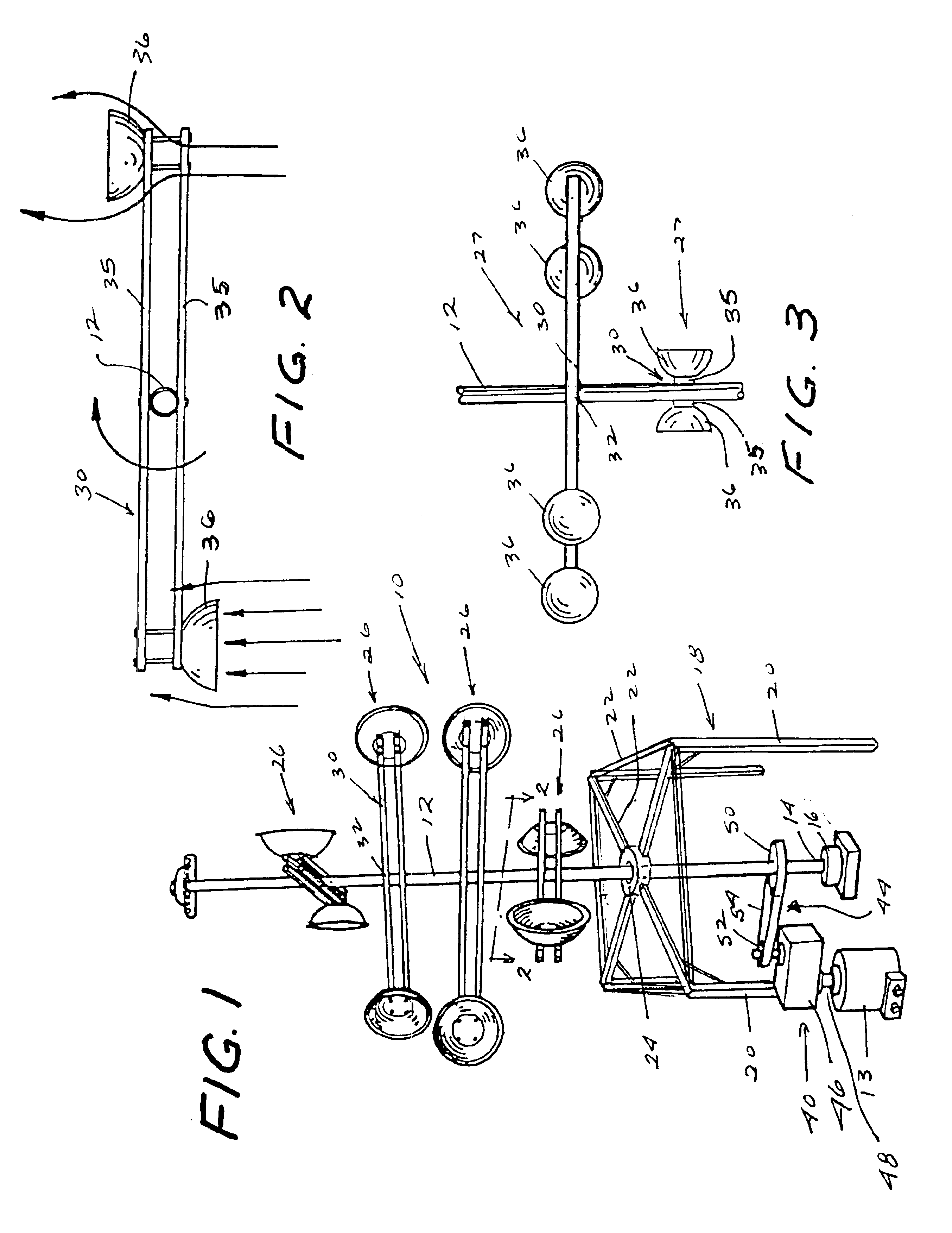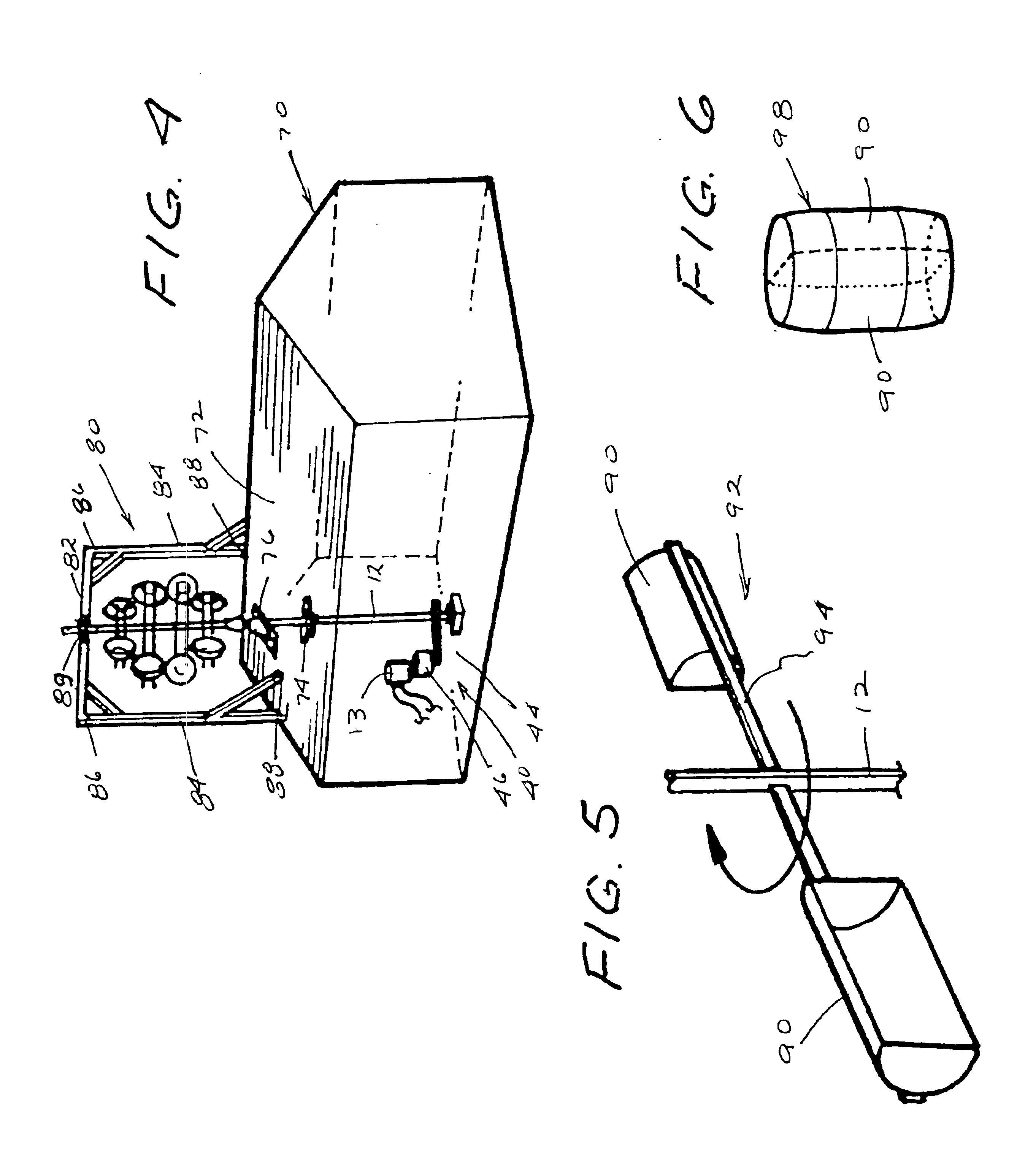Horizontal wind generator
a generator and horizontal technology, applied in the direction of machines/engines, renewable energy generation, greenhouse gas reduction, etc., can solve the problem of increasing the speed of the windmill blade, and achieve the effect of cost-effectiveness
- Summary
- Abstract
- Description
- Claims
- Application Information
AI Technical Summary
Benefits of technology
Problems solved by technology
Method used
Image
Examples
Embodiment Construction
[0022]Referring to the drawings, a horizontal wind generator 10, shown schematically in FIG. 1, comprises a horizontal wind mill 11 connected with an electrical generator 13. Horizontal windmill 11 comprises a rotatable vertical pole 12 having a base 14 supported by bearings 16. A frame 18 comprising legs 20 and crossbars 22 supports the pole at an elevated position by means of suitable bearings 24 or the like that engage the pole and permit rotation thereof in the frame. The frame can take any form that provides stable support for the pole.
[0023]An upper portion of pole 12 is elevated to a position where it is accessible to wind forces. A plurality of horizontal wind drive units 26 are mounted at axially spaced locations along an upper portion of pole 12. The wind drive units can be identical (but do not have to be) but are angularly displaced at regular intervals about the axis of the pole (see FIG. 7). When four drive units are employed, as shown in FIG. 1, the drive units are ax...
PUM
 Login to View More
Login to View More Abstract
Description
Claims
Application Information
 Login to View More
Login to View More - R&D
- Intellectual Property
- Life Sciences
- Materials
- Tech Scout
- Unparalleled Data Quality
- Higher Quality Content
- 60% Fewer Hallucinations
Browse by: Latest US Patents, China's latest patents, Technical Efficacy Thesaurus, Application Domain, Technology Topic, Popular Technical Reports.
© 2025 PatSnap. All rights reserved.Legal|Privacy policy|Modern Slavery Act Transparency Statement|Sitemap|About US| Contact US: help@patsnap.com



